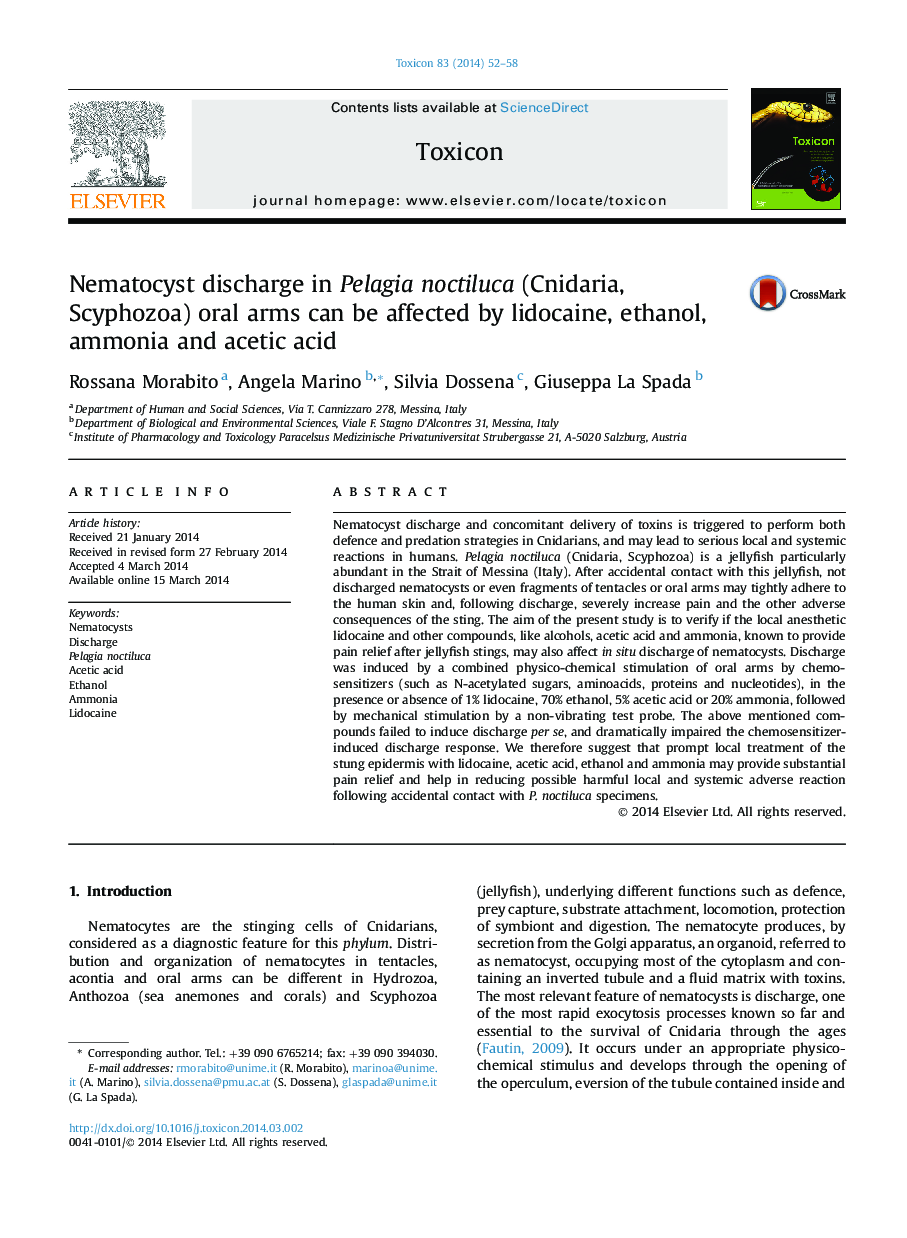| Article ID | Journal | Published Year | Pages | File Type |
|---|---|---|---|---|
| 8396495 | Toxicon | 2014 | 7 Pages |
Abstract
Nematocyst discharge and concomitant delivery of toxins is triggered to perform both defence and predation strategies in Cnidarians, and may lead to serious local and systemic reactions in humans. Pelagia noctiluca (Cnidaria, Scyphozoa) is a jellyfish particularly abundant in the Strait of Messina (Italy). After accidental contact with this jellyfish, not discharged nematocysts or even fragments of tentacles or oral arms may tightly adhere to the human skin and, following discharge, severely increase pain and the other adverse consequences of the sting. The aim of the present study is to verify if the local anesthetic lidocaine and other compounds, like alcohols, acetic acid and ammonia, known to provide pain relief after jellyfish stings, may also affect in situ discharge of nematocysts. Discharge was induced by a combined physico-chemical stimulation of oral arms by chemosensitizers (such as N-acetylated sugars, aminoacids, proteins and nucleotides), in the presence or absence of 1% lidocaine, 70% ethanol, 5% acetic acid or 20% ammonia, followed by mechanical stimulation by a non-vibrating test probe. The above mentioned compounds failed to induce discharge per se, and dramatically impaired the chemosensitizer-induced discharge response. We therefore suggest that prompt local treatment of the stung epidermis with lidocaine, acetic acid, ethanol and ammonia may provide substantial pain relief and help in reducing possible harmful local and systemic adverse reaction following accidental contact with P. noctiluca specimens.
Related Topics
Life Sciences
Biochemistry, Genetics and Molecular Biology
Biochemistry, Genetics and Molecular Biology (General)
Authors
Rossana Morabito, Angela Marino, Silvia Dossena, Giuseppa La Spada,
